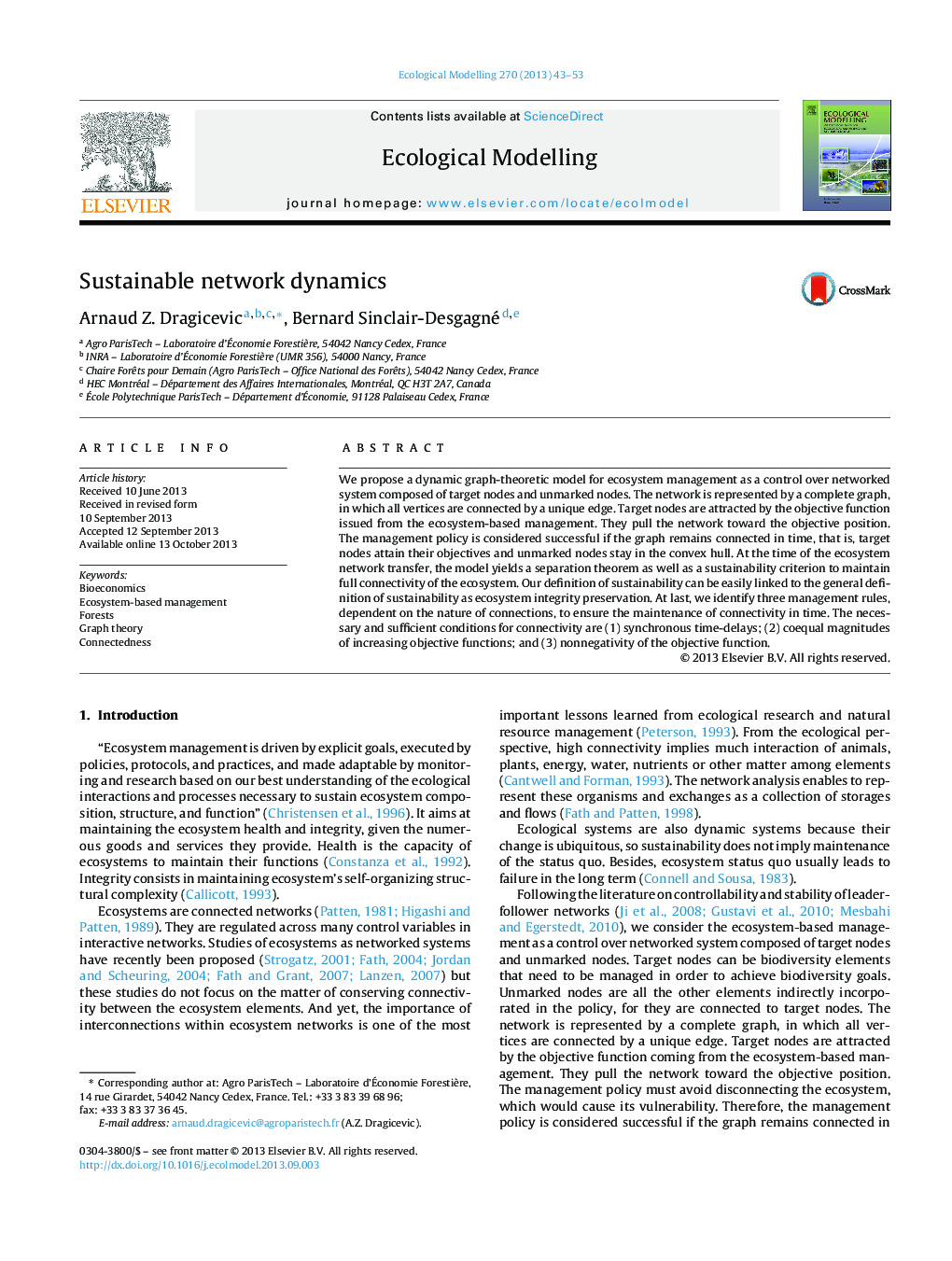| Article ID | Journal | Published Year | Pages | File Type |
|---|---|---|---|---|
| 4376012 | Ecological Modelling | 2013 | 11 Pages |
We propose a dynamic graph-theoretic model for ecosystem management as a control over networked system composed of target nodes and unmarked nodes. The network is represented by a complete graph, in which all vertices are connected by a unique edge. Target nodes are attracted by the objective function issued from the ecosystem-based management. They pull the network toward the objective position. The management policy is considered successful if the graph remains connected in time, that is, target nodes attain their objectives and unmarked nodes stay in the convex hull. At the time of the ecosystem network transfer, the model yields a separation theorem as well as a sustainability criterion to maintain full connectivity of the ecosystem. Our definition of sustainability can be easily linked to the general definition of sustainability as ecosystem integrity preservation. At last, we identify three management rules, dependent on the nature of connections, to ensure the maintenance of connectivity in time. The necessary and sufficient conditions for connectivity are (1) synchronous time-delays; (2) coequal magnitudes of increasing objective functions; and (3) nonnegativity of the objective function.
